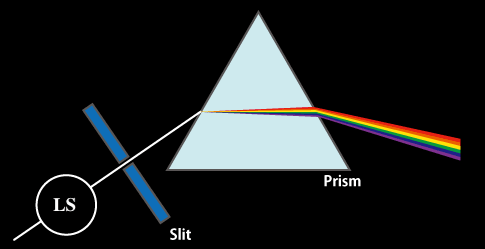
After it rains, a rainbow sometimes appears in the sky. This is due to refraction of light by water droplets, and the diffraction angle depends on the wavelength of the incident light. A similar effect can be produced by a prism, which was used to produce the first spectrograph (Figure 1).
Electrons in atoms and molecules absorb light energy and change from the ground state to an excited state. Such electronic transitions occur at discrete energy levels (Figure 2) that are specific to the atoms or molecules involved.
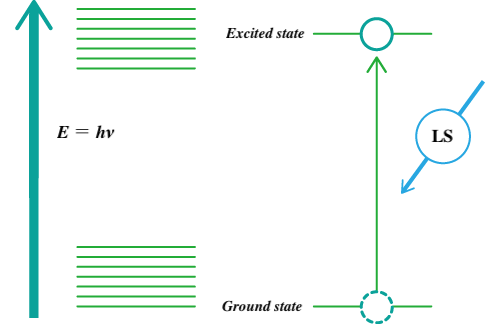
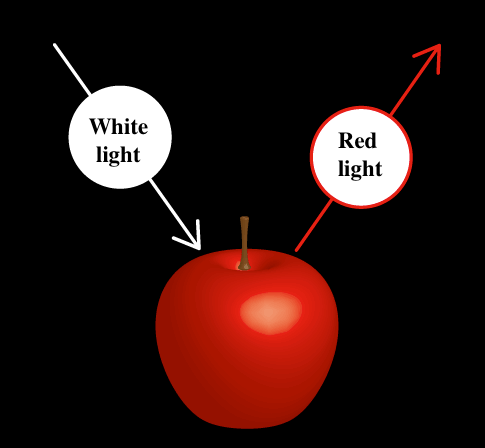
Different substances absorb light at different wavelengths. For example, red apples absorb light in the wavelength range of about 400 – 600 nm. On the other hand, light with wavelengths of 600 to 700 nm (red) is not absorbed but is reflected and scattered, so that our eyes perceive apples as red (Figure 3).
A UV-Vis spectrophotometer comprises a light source, a monochromator, a sample cuvette (cell), and a photodetector. There are two types of optical arrangement: single beam and double beam (Figure 4). In either case, white light from a light source (LS) is introduced into a monochromator and dispersed by a diffraction grating.
Only light with a specific wavelength is extracted from the resulting spectrum through the exit slit. In the case of a single beam, the obtained monochromatic light with intensity I0 irradiates a sample and the transmitted light with intensity I is detected. Here, I/I0 is the transmittance. In the double-beam configuration, the monochromatic light is divided into two by a beam splitter, and the individual beams pass through a sample and a reference, following which both are detected. By bifurcating the optical path, both I0 and I can be measured simultaneously.
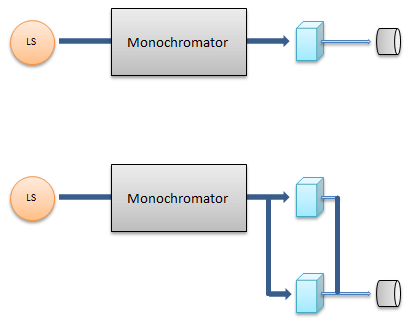
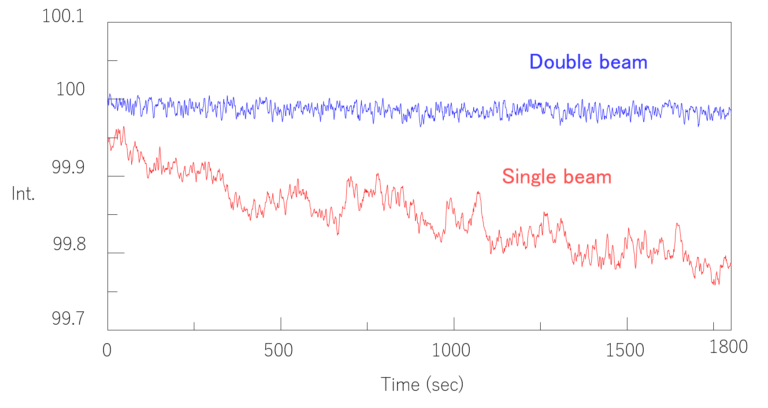
In the single-beam configuration, the monochromator, sample, and detector are arranged in series. Although the optical system is simple, it is easily affected by fluctuations in the light source, and a blank measurement is required every time. In the-double beam configuration, monochromatic light is split into two beams by a beam splitter, and the sample and reference are irradiated. Blank correction can therefore be performed automatically and there is no effect of light source fluctuations (Figure 5).
©Jasco Europe S.R.L. (Socio Unico) Direzione e coordinamento ex. art. 2497 bis c.c. – P.I. 08609570158 | Privacy Policy | Cookie Policy | Manage consent | Realizzazione sito web: Alkimedia
| Cookie | Duration | Description |
|---|---|---|
| cookielawinfo-checbox-analytics | 11 months | This cookie is set by GDPR Cookie Consent plugin. The cookie is used to store the user consent for the cookies in the category "Analytics". |
| cookielawinfo-checkbox-necessary | 11 months | This cookie is set by GDPR Cookie Consent plugin. The cookies is used to store the user consent for the cookies in the category "Necessary". |
| CookieLawInfoConsent | 1 year | Records the default button state of the corresponding category & the status of CCPA. It works only in coordination with the primary cookie. |
| elementor | never | This cookie is used by the website's WordPress theme. It allows the website owner to implement or change the website's content in real-time. |
| viewed_cookie_policy | 11 months | The cookie is set by the GDPR Cookie Consent plugin and is used to store whether or not user has consented to the use of cookies. It does not store any personal data. |
| Cookie | Duration | Description |
|---|---|---|
| Google Maps | Google Maps is a map visualization service managed by Google Inc. and is used to integrate such contents within its pages. |